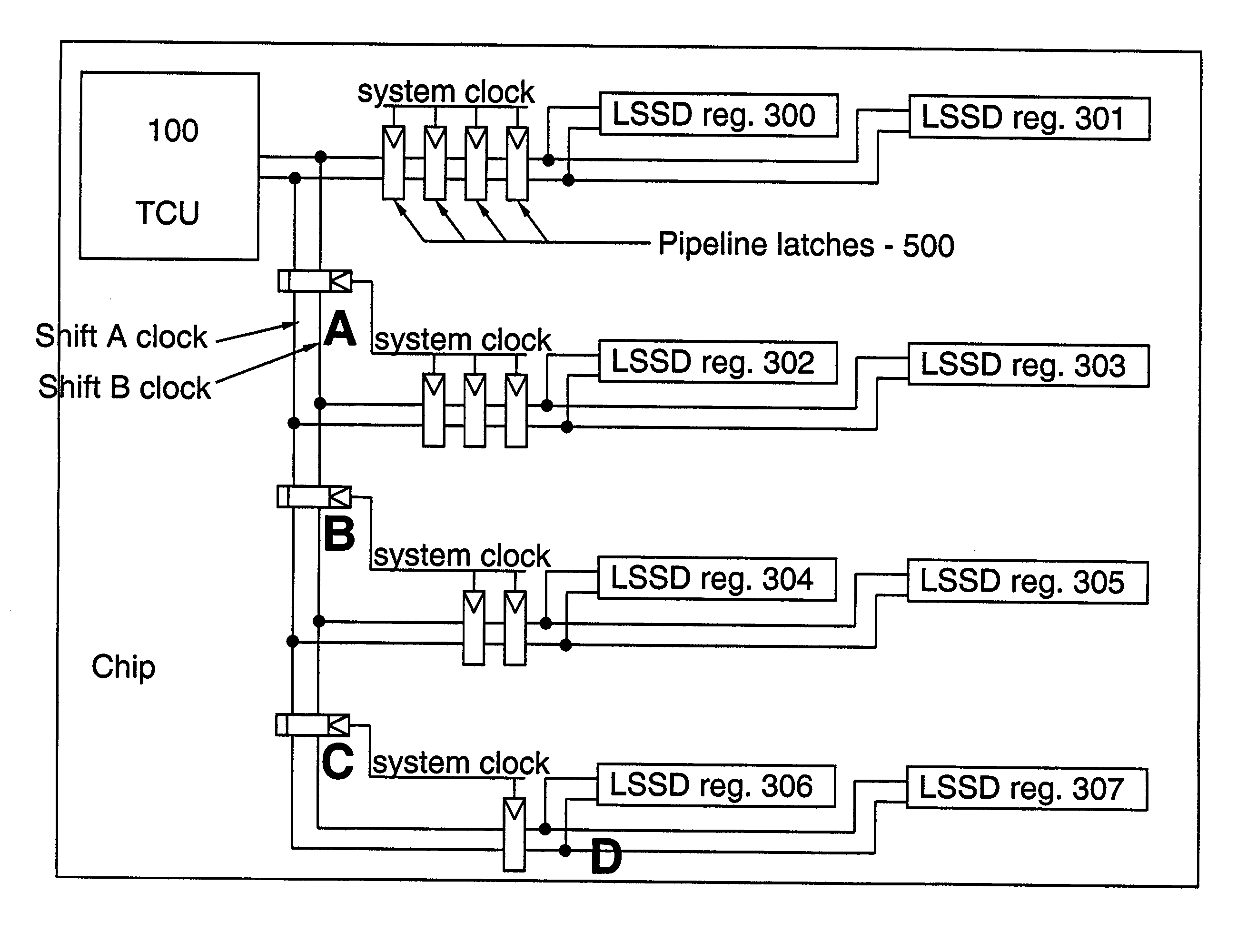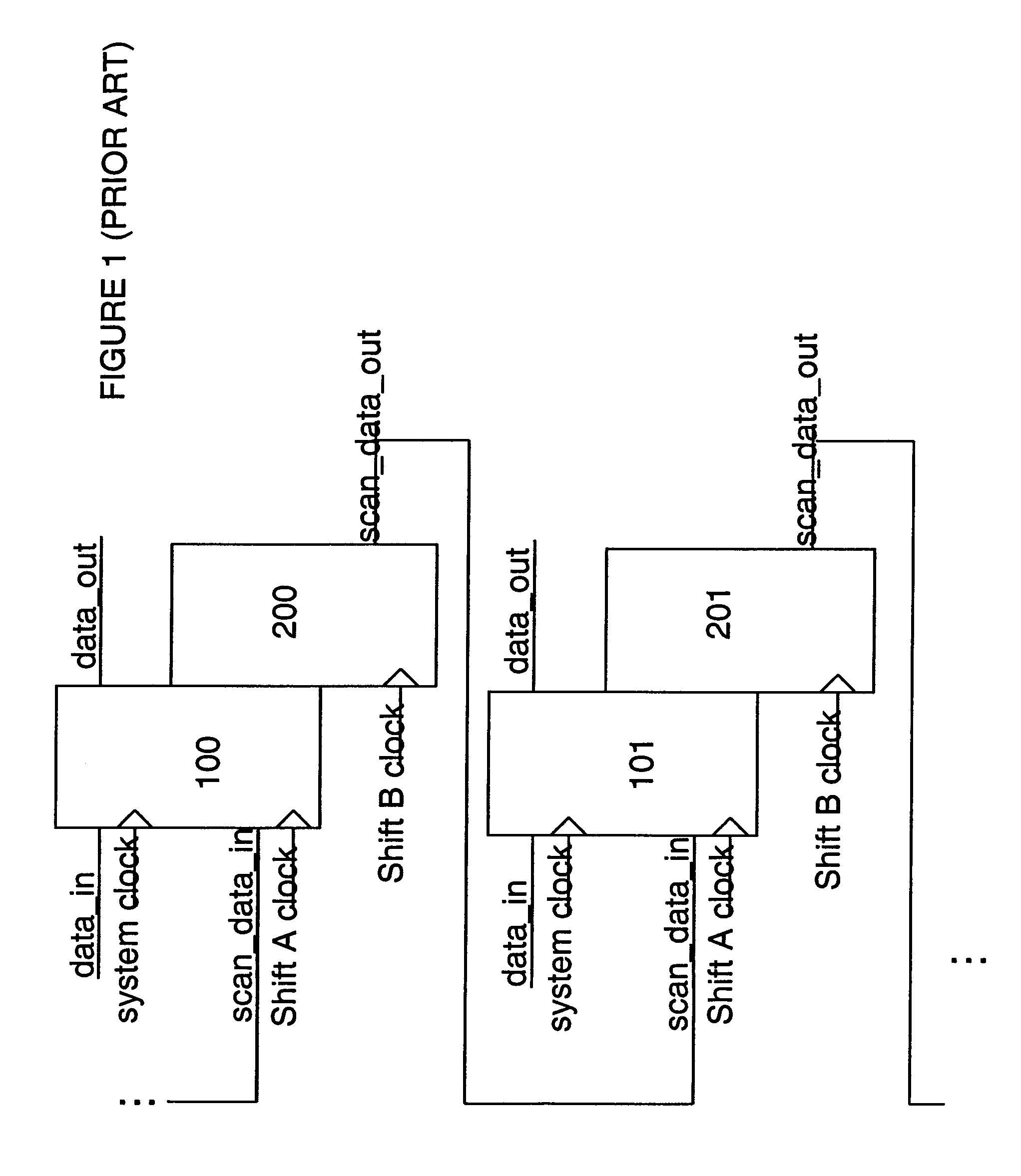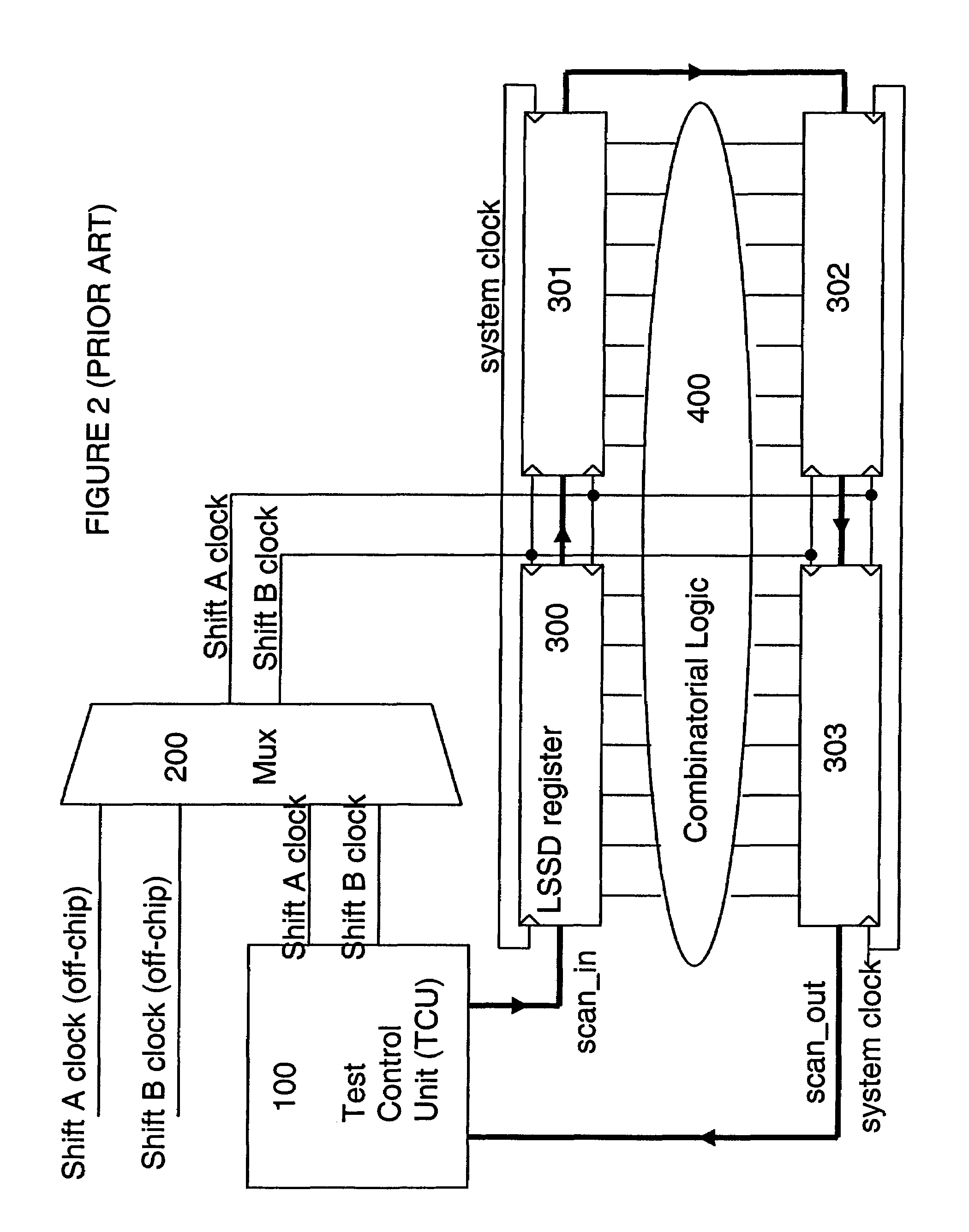High-speed level sensitive scan design test scheme with pipelined test clocks
a technology of scan design and test scheme, applied in the field of design automation, can solve the problems of increasing the difficulty of distributing shift a and shift b clocks at very high frequencies, affecting the design of complex combinatorial and sequential logic circuits, and increasing the cost of fault-oriented approaches
- Summary
- Abstract
- Description
- Claims
- Application Information
AI Technical Summary
Benefits of technology
Problems solved by technology
Method used
Image
Examples
Embodiment Construction
[0033]The inventive method is designed to enhance a standard LSSD configuration by way of small pipeline latches (clocked off the system, functional clock) to distribute the Shift A and Shift B clock signals to various points throughout a VLSI design, with a distribution network that is tailored according to the desired Shift A and Shift B clock frequencies. Using the pipeline latches for distribution of the Shift A and Shift B clocks allows the clock edges to be synchronized across the entire system, but still allows control of the Shift A and Shift B clock periods (with a granularity now measured in units of system clock cycles) in an arbitrary fashion. Using this type of architecture, LBIST is preferably designed to run at frequencies of up to one-half the system clock frequency (compared to one-sixteenth for a more typical LSSD scheme). Also, since the main portion of the Shift A and Shift B clock distributions are through pipeline latches, the arrival times of the Shift A and S...
PUM
 Login to View More
Login to View More Abstract
Description
Claims
Application Information
 Login to View More
Login to View More - R&D
- Intellectual Property
- Life Sciences
- Materials
- Tech Scout
- Unparalleled Data Quality
- Higher Quality Content
- 60% Fewer Hallucinations
Browse by: Latest US Patents, China's latest patents, Technical Efficacy Thesaurus, Application Domain, Technology Topic, Popular Technical Reports.
© 2025 PatSnap. All rights reserved.Legal|Privacy policy|Modern Slavery Act Transparency Statement|Sitemap|About US| Contact US: help@patsnap.com



